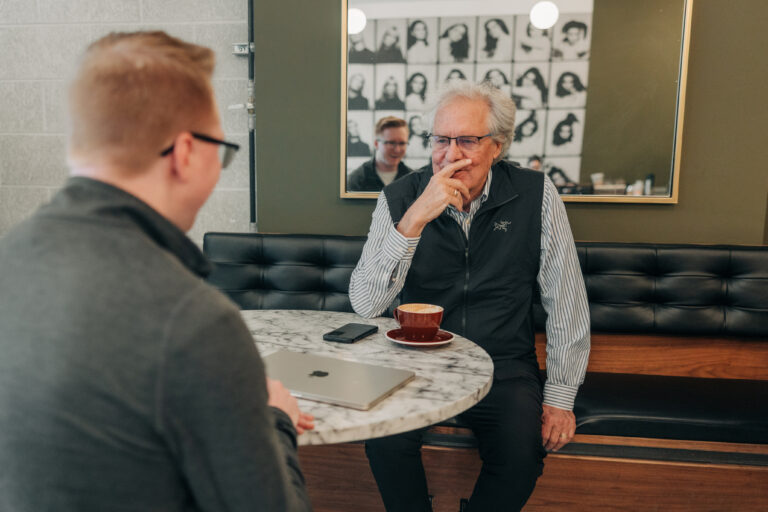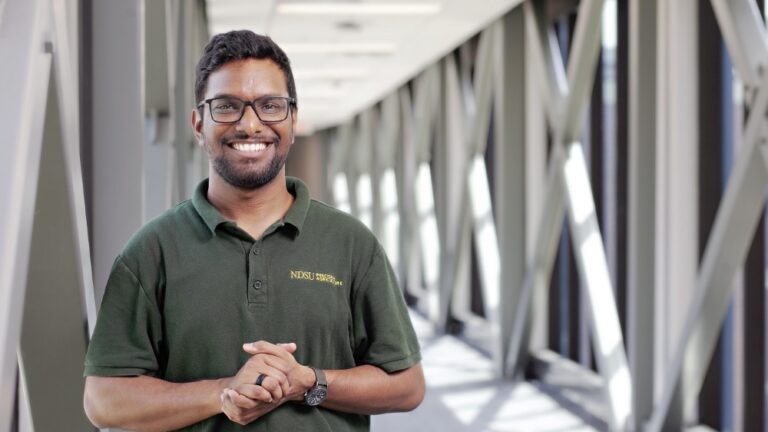Dr. Bill Wilson ’75 leverages his international network to create connections between students and the industry.
Read MoreAgriculture's Miracle Bacteria
Rhizobium allow legumes to produce their own nitrogen, reducing the cost of fertilizer for farmers and eliminating harmful runoff into the environment. The possibility of transferring this symbiotic relationship to other crops is within reach — and philanthropy is quadrupling the pace of its progress.
Story by Micaela Gerhardt | Photos by Kensie Wallner | April 16, 2024
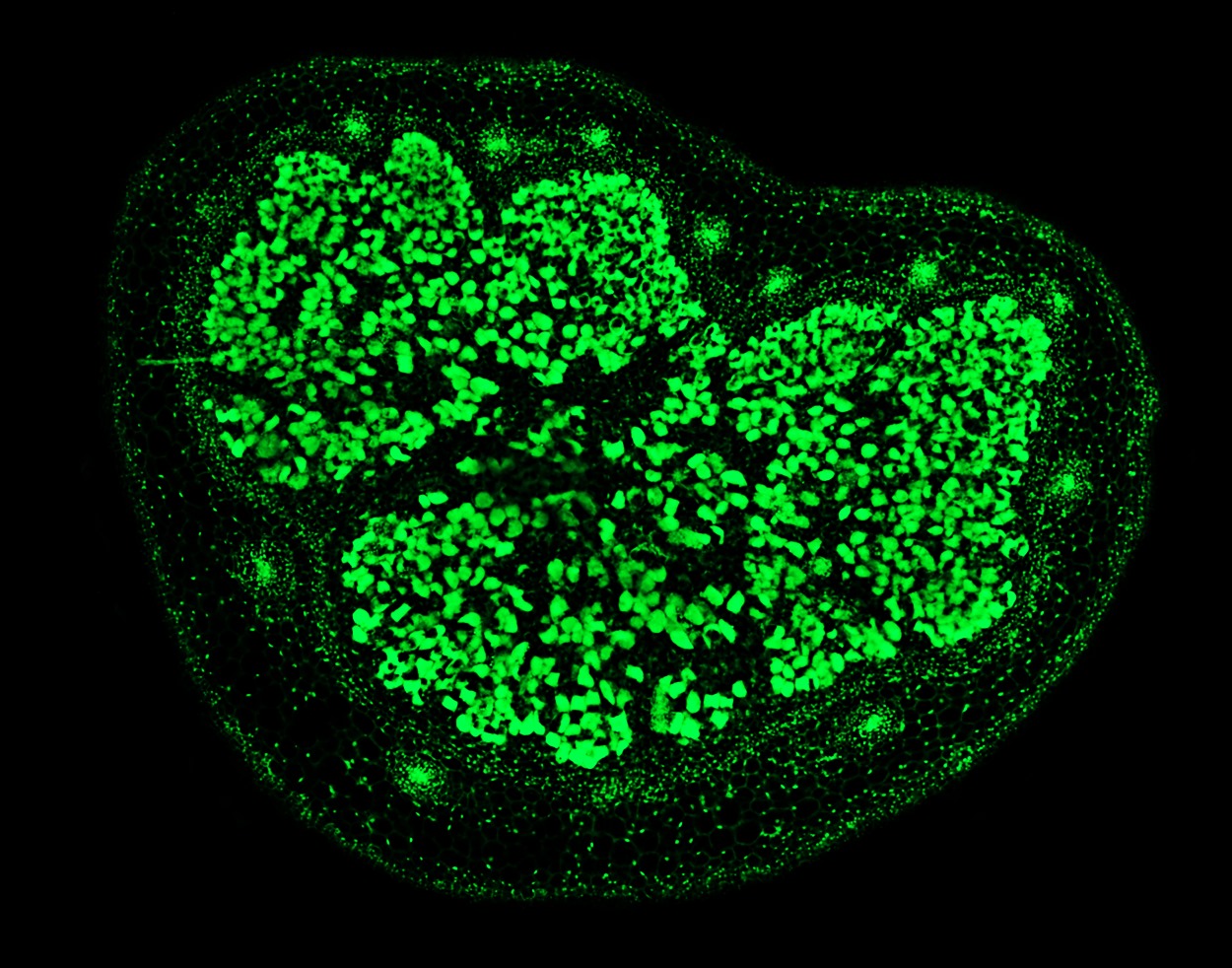
Pull a legume — beans, lentils, alfalfa, or peas — from the ground, and you’ll find small pinkish-white nodules, almost pearl-like, clustered on the roots. Each node is a dedicated organ containing millions of bacteria called rhizobium, which form symbiotic, or mutual, relationships with legumes, allowing them to do what no other crop has yet evolved to do: produce their own nitrogen.
Seen under a microscope in Barney Geddes’ lab, where he and a team of microbiology students are diligently working toward a new evolutionary event — the symbiosis of rhizobium in cereal crops, like wheat, corn, and rice — these nodules might appear fluorescent, dyed to demonstrate the activation of symbiotic genes.
“As we [humans] breathe in, we’re taking in almost all nitrogen, but we can’t do anything with that nitrogen — nor can [most] plants,” Barney, an assistant professor of plant systems and microbial ecology, said. “These bacteria have evolved the ability to take that nitrogen and change it into a natural form of fertilizer that they can supply directly to the plant.”
Without nitrogen-fixing bacteria like rhizobium, most modern crops require the use of nitrogen fertilizers to meet the desired yield and nutritional needs of a world population rapidly approaching 9 billion. In fact, nearly half of the world’s caloric intake is dependent on nitrogen fertilizer, according to Erisman et al. and processed by Our World in Data.
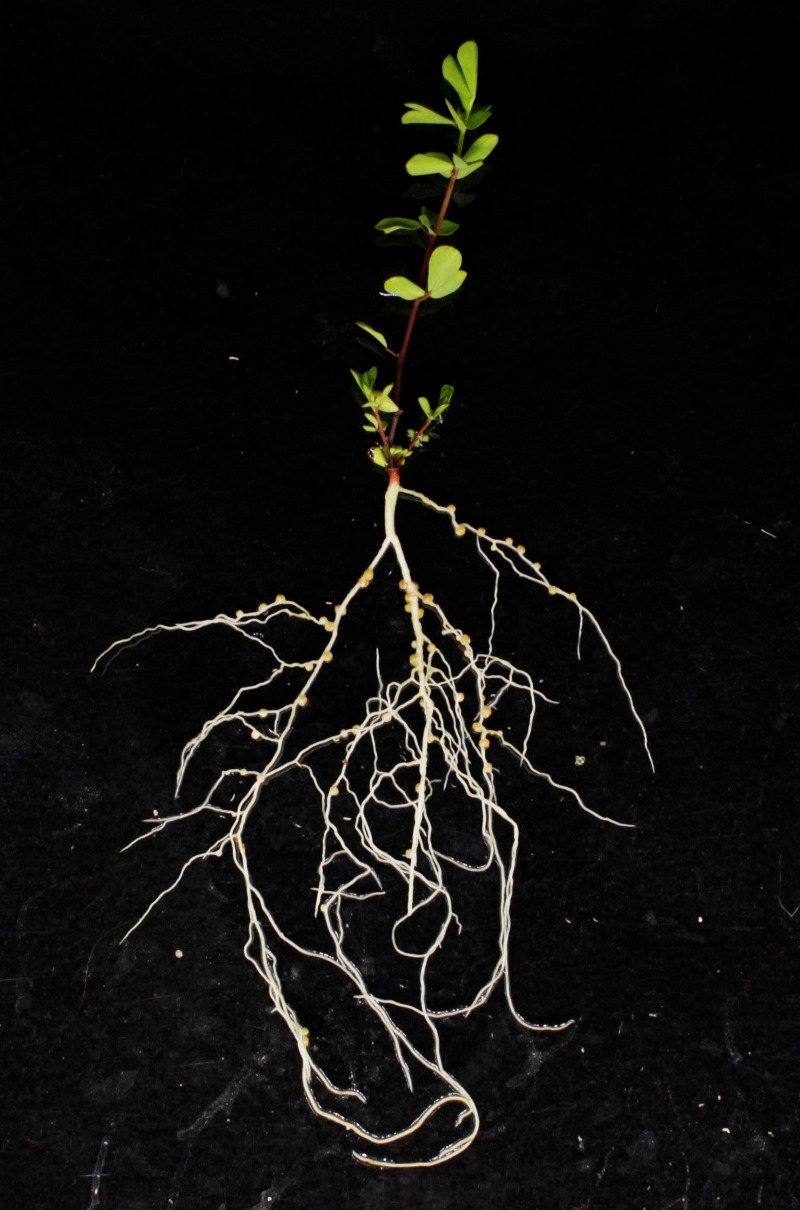
The work Barney and his students are doing is part of an ongoing global effort. Broadly speaking, their research goals are to support farmers by reducing spending on nitrogen fertilizers, which are the main expenditure in many farming operations, while also alleviating harmful effects on the environment.
“Nitrogen fertilizers have been truly incredible and transformative, but they don’t come without their costs,” Barney said. “They have a lot of issues that, as we think about global warming, as we think about ecology, a lot of the major issues facing the earth today … a lot of those are heavily impacted by the use of nitrogen fertilizers.”
One of the most notable repercussions of nitrogen fertilizer runoff is the occurrence of dead zones in major bodies of water. Dead zones are areas where there is a reduced level of oxygen in the water due to nutrient pollution, and according to the National Ocean Service, the Gulf of Mexico is the second largest dead zone in the world. Low oxygen levels in the water cause the ecological system to collapse, forcing marine life to escape the millions of affected acres or die.
Additionally, the manufacturing and application of nitrogen fertilizers contributes to a warming planet. Deteriorating fertilizer releases nitrous oxide into the atmosphere, as stated by the MIT Climate Portal, and fossil fuels like coal and methane gas are used to produce ammonia, a nitrogen-containing compound.
“We’re actually doubling the input into the nitrogen cycle through applications in agriculture, which has massive ecological consequences,” Barney said. “Yet farmers need [nitrogen fertilizers] to get the yields they need to feed the world, to keep the family farm, to keep the economy going …”
Projects in Barney’s lab span different areas of microbial research; part of his program aims to improve legume agriculture by making existing rhizobium symbiosis as efficient as possible. Simultaneously, he and his students are working toward a more futuristic outcome. Their ultimate objective is to one day see fields of cereal crops capable of producing their own nitrogen through a new-to-nature association developed, at least in part, in a small lab in NDSU’s Van Es Hall.
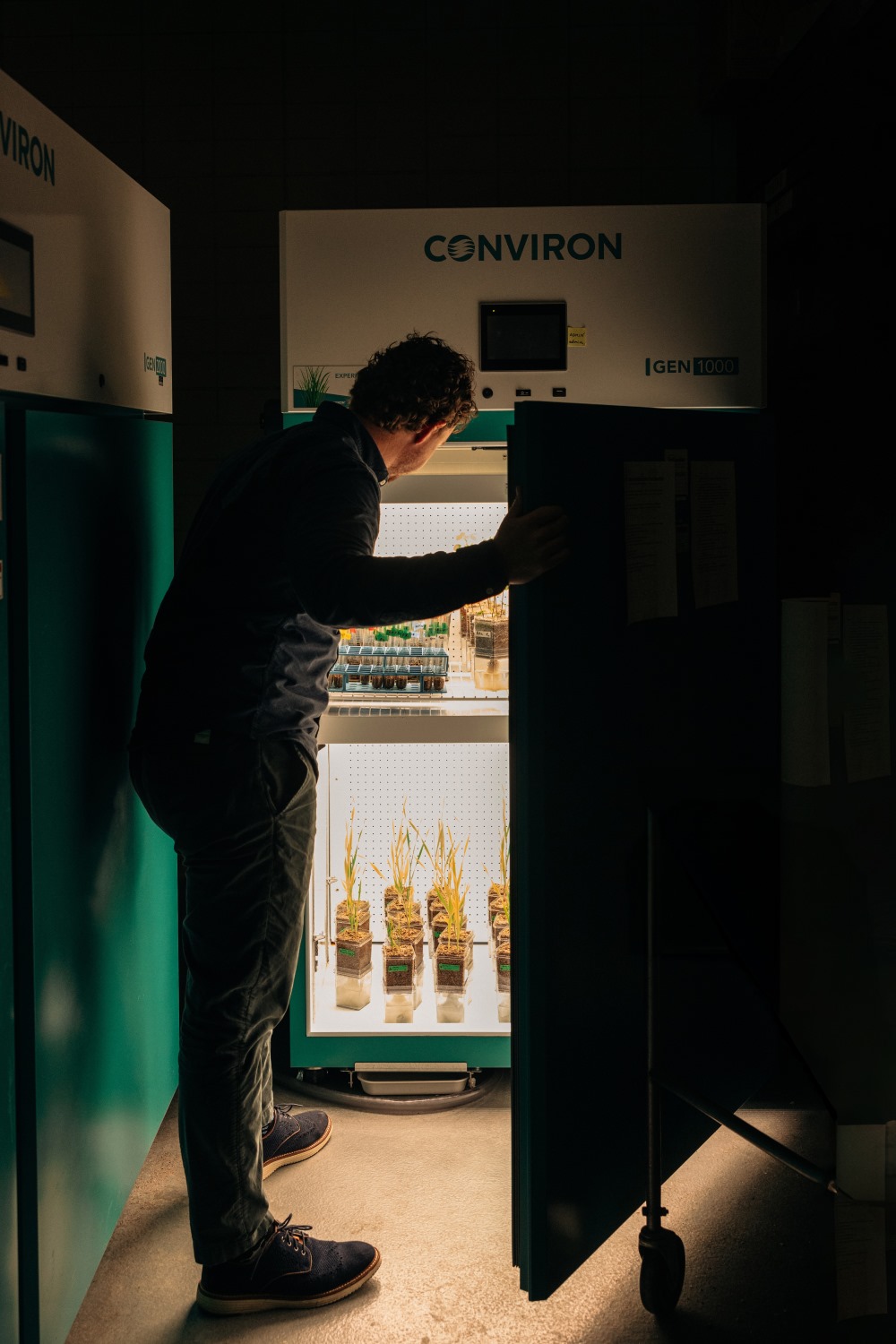
Barney’s enthusiasm for this scientific breakthrough is matched by Richard ’65 and Linda Offerdahl, who recently invested more than $1.1 million to establish a named faculty position in the department of microbiological sciences at NDSU, providing funds to support research and innovation. Now, Barney is known as the Richard and Linda Offerdahl Faculty Fellow.
“When we first talked to Barney, he was talking about something that would take 20 years,” Richard, an electrical engineering alumnus, said. “I said, ‘Well, in 20 years, I’m going to be 100. I’d like something a little sooner. What do you need to make it sooner?’”
Barney estimated he could quadruple the pace of progress in his lab with the right resources, including state-of-the-art technology that can accelerate the rate of reading, writing, and engineering DNA and more research assistance in the form of undergraduate, graduate, and post-doctoral students. Richard and Linda were eager to invest. As highly active philanthropists and humanitarians, they are motivated by the potential to make the world a better place.
“The work Barney is doing has a global impact, so that makes it highly worthwhile,” Richard said. “It’s our honor and privilege to contribute in our own small way.”
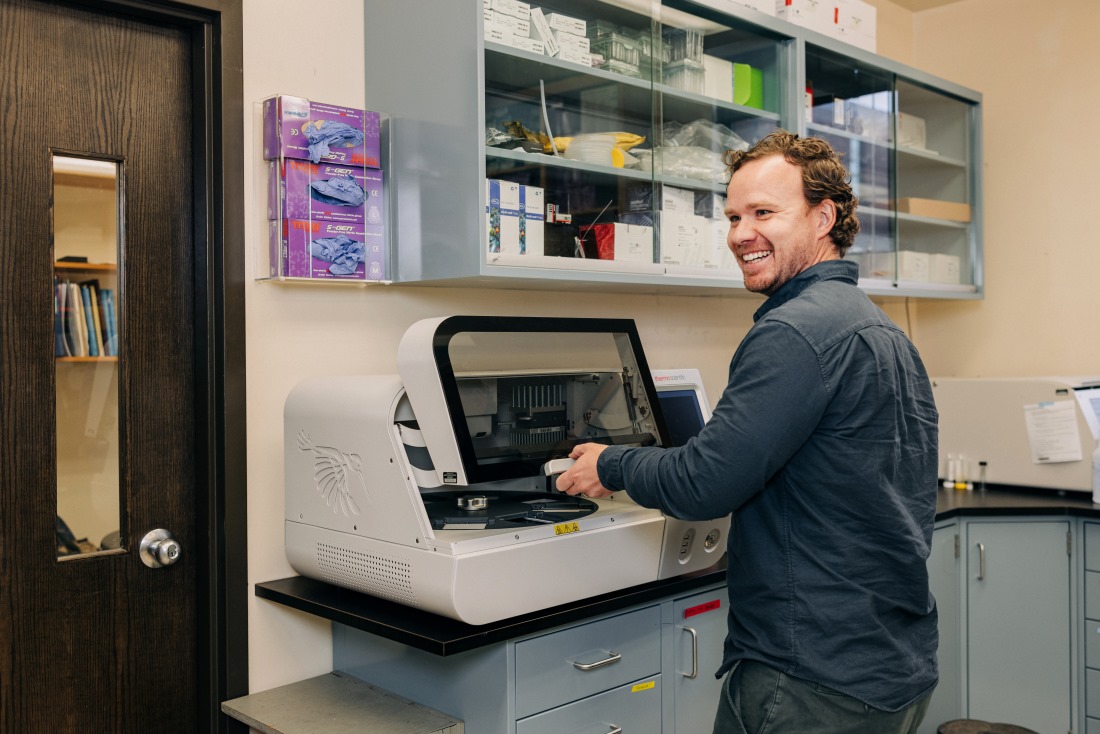
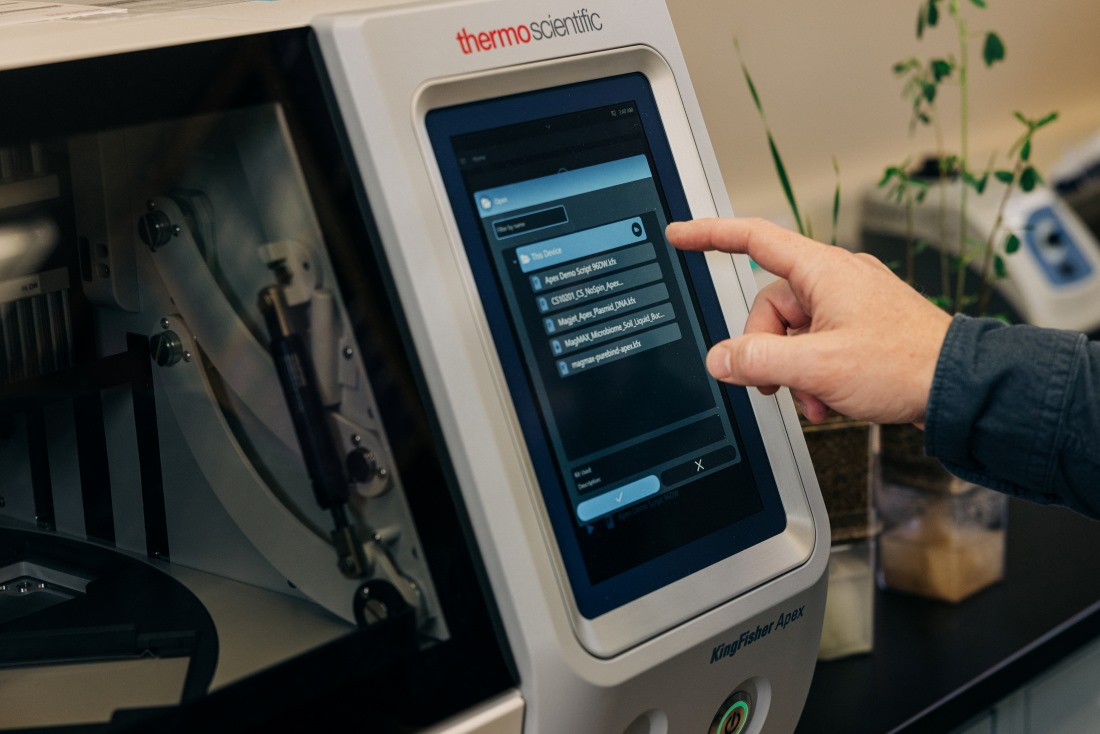
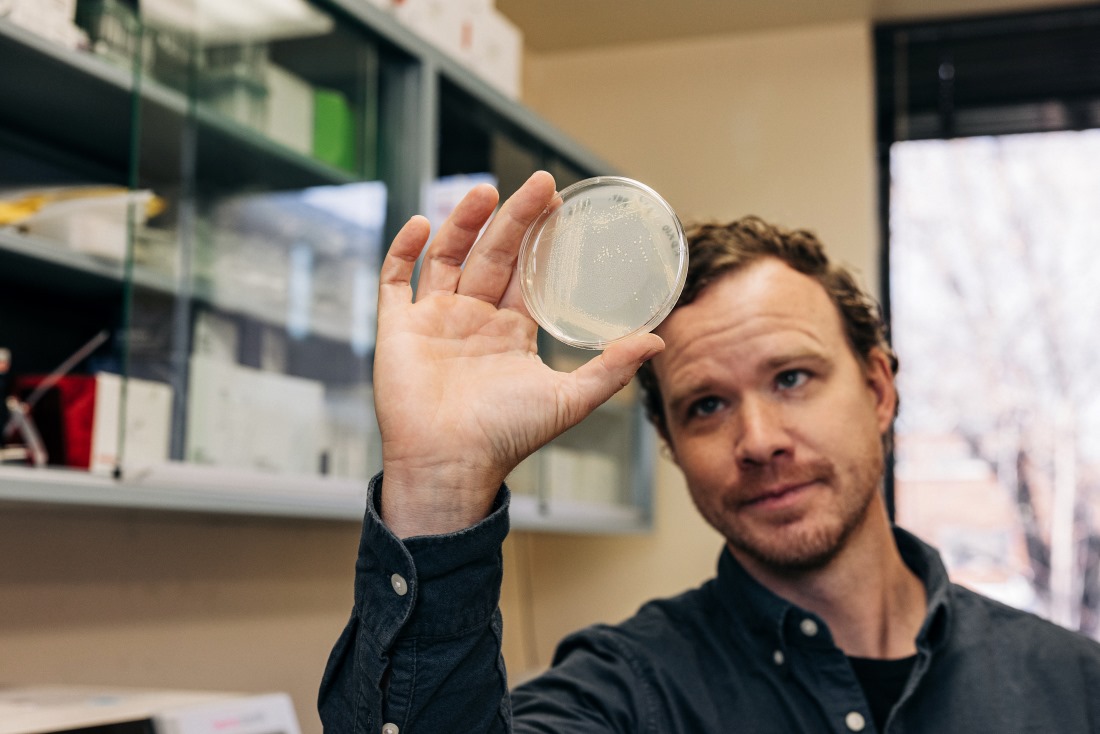
PICKING UP THE PACE: New technology accelerates the rate of reading, writing, and engineering DNA.
Together, the Offerdahls have invested in the development of pulmonary vests for cystic fibrosis patients — which resulted in a product that aids people with chronic obstructive pulmonary disease as well — and a prosthesis for peripheral neuropathy in the feet, which is numbness often caused by diabetes or old age. These investments yielded financial success that has enabled the Offerdahls to philanthropically support impactful initiatives in areas such as higher education, social services, and more.
“We both have an innate curiosity and an eagerness to see what’s next in our life,” Linda said. “From that standpoint, I think we are both continuously evolving — we’re finding new things to engage in our community with …”
As an entrepreneur, lifelong learner, and earnest reader, Richard believes in backing ideas that have strong market potential and the ability to help as many people as possible. When he and Linda began discussing where they wanted to invest at NDSU, they considered impact, originality, feasibility, and leadership.
“You know, the leadership aspect is very important,” Richard said. “I’ve become convinced that in the world there’s no shortage of ideas. There’s no shortage of people who want to work … There’s no shortage of money to back good ideas, and there’s no shortage of management … The real shortage is leadership.”
In Barney, both Richard and Linda found a leader with intellect, drive, global connections, and a shared care and concern for the agricultural community. Barney grew up on a small family farm in south central Manitoba, Canada. His parents tended cattle, alfalfa, and grain crops and instilled the principles of sustainable agriculture in Barney and his brother long before it was a trending topic.
These principles set the stage for Barney’s career trajectory. He earned his Ph.D. in microbiology from the University of Manitoba, where he studied symbiotic nitrogen fixation, and later completed two postdocs, one at McMaster University and one at the University of Oxford. While at Oxford, leading scientists in the field introduced Barney to the cutting-edge concept of engineering nitrogen fixation in cereals. He was energized and inspired, but after years spent in the lab, Barney felt pulled to reconnect with the family farm. He took a small career break and returned home to farm for a year.
“After that year, I realized I really need to be a scientist. That’s such a core of my being now that that’s what I want to do in life. When I came back to science, though, there was always this desire to be more closely connected to agriculture than some academic settings are,” Barney said, which is why he found NDSU and its statewide Extension offices so appealing.
“When we first talked to Barney, he was talking about something that would take 20 years. I said, ‘Well, in 20 years, I’m going to be 100. I’d like something a little sooner. What do you need to make it sooner?'"
Richard Offerdahl ’65
Since late 2020, Barney has been teaching, researching, and mentoring students at NDSU. Along with the Geddes Lab, Barney established NDSU’s inaugural iGEM (international genetically engineered machine) team, which consists of undergraduate and graduate students who participate in an annual worldwide synthetic biology competition. He also oversees NDSU’s partnership with local high schools in the Plant the Moon Challenge, which explores the potential for lunar agriculture applications.

“What Barney does that’s special is he takes these really interesting science ideas, and he applies them to important problems where you can follow the process of getting to the end application,” former iGEM president Mia Haugan ’24, ’25 said.
As a freshman at NDSU, Mia was one of the first two students to join Barney’s research team. Now, she’s working towards an accelerated master’s degree in microbiology. Getting involved in research early in her academic journey has expedited her understanding of important scientific concepts.
“I learned to do a DNA extraction before we talked about it in class,” she said. “I’ve gone out to the field to collect samples. I’ve done work in the wet lab … and we also do field trials, so we see how the science works in the field and helps people.”
Ahmad Al-Amad ’26 is one of the graduate students supported by the Offerdahls’ gift. He came to NDSU specifically to be a part of Barney’s lab, which he first learned about while attending McMaster University. There, Ahmad took a synthetic biology course and discovered a new passion for science. Coincidentally, his synthetic biology professor knew Barney from McMaster, where they were once postdoctoral students in the same lab.
As Ahmad learned more about Barney’s research and his goal to produce nitrogen fixation in cereal crops, he felt moved, describing it as a “noble pursuit.” Today, Ahmad works closely with Sinorhizobium meliloti, a bacterium that successfully produces nitrogen in alfalfa plants. Using software to design new genetic sequences, Ahmad extracts small sections of DNA from other microbes and integrates them into the DNA of his model microbe, S. meliloti, in an effort to increase its degree of interaction with other plants.
“The nature of what I’m doing — every day is a brand-new day … especially when you come up with new ways of doing the fundamentals and then you prove that it works,” Ahmad said. “It’s like, ‘Oh my goodness, this was just from pure imagination.’”
The technology purchased with funding from the Offerdahls’ investment will help Barney’s team pursue research and education at the highest level, accelerating processes in the lab and hands-on learning in the classroom.
“I think philanthropy can be super impactful by being able to come in and really funnel a lot of resources into one specific area,” Barney said. “It’s letting me do things at a stage of my career I never thought I’d be able to do. I wanted to be a world leader in this space when I came to NDSU, and this [fellowship] is making that a reality.”
Share This Story
Related Stories
The Next Era of Agriculture Is Autonomous
NDSU researchers are exploring how artificial intelligence and precision agriculture practices can help protect resources, support farmers, and sustain the nation’s food...
Read More